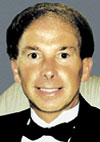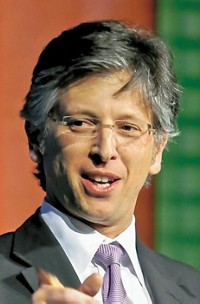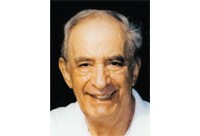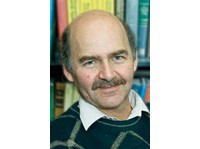Advertisement
Grab your lab coat. Let's get started
Welcome!
Welcome!
Create an account below to get 6 C&EN articles per month, receive newsletters and more - all free.
It seems this is your first time logging in online. Please enter the following information to continue.
As an ACS member you automatically get access to this site. All we need is few more details to create your reading experience.
Not you? Sign in with a different account.
Not you? Sign in with a different account.
ERROR 1
ERROR 1
ERROR 2
ERROR 2
ERROR 2
ERROR 2
ERROR 2
Password and Confirm password must match.
If you have an ACS member number, please enter it here so we can link this account to your membership. (optional)
ERROR 2
ACS values your privacy. By submitting your information, you are gaining access to C&EN and subscribing to our weekly newsletter. We use the information you provide to make your reading experience better, and we will never sell your data to third party members.
Environment
Joel Henry Hildebrand Award In The Theoretical & Experimental Chemistry Of Liquids
January 29, 2007
| A version of this story appeared in
Volume 85, Issue 5
Sponsored by ExxonMobil Research & Engineering
"The most accomplished, well-cited, and prolific researcher in the field of liquids" is how one colleague describes Keith E. Gubbins. Another extols Gubbins by noting that his "distinguished contributions to liquid-state theory have earned him international renown."
Indeed, Gubbins has made pioneering contributions to both basic and applied statistical mechanics of liquids, encompassing the topics of perturbation theory of liquids; statistical mechanics of liquids of polar, hydrogen- bonding, and nonspherical molecules; liquid interfacial properties and small drops; molecular modeling and characterization of nanoporous materials; phase transitions in confined systems; and the effects of confinement on chemical reactions.
Gubbins' research is centered on understanding the behavior of nanodimensional fluids and solids, as well as the influence of surface forces on those materials. To do this, his research group develops molecular models that are then used in simulations and theories to interpret experimental results and to predict behavior that is not accessible by experiment. The group is currently investigating micellar and reverse micellar solutions, nanoporous materials, and chemical reactions in nanoscale systems.
Gubbins' work on homogeneous fluid phases cast him as a leader in the early development and application of theory and molecular simulation to liquids composed of nonspherical and polar molecules. Through the use of molecular dynamics, he determined the free energy of a high-density fluid composed of molecules that have strongly repulsive cores.
His work on inhomogeneous fluids and interfaces has also been important. Gubbins pioneered the study of molecular orientation at interfaces by using mean-field density-functional theory and computer simulation. His groundbreaking contributions in this respect include the adsorption and orientation of amphiphiles at interfaces, as well as studies on the structure of the surface of liquid crystals.
To expand on his earlier work, Gubbins is now looking at extremely inhomogeneous fluids, including small drops and bubbles as well as fluids in small pores. His group has developed methods for characterizing the pores and for determining and predicting their efficiency in separating chemical components and in catalyzing chemical reactions.
Gubbins, 70, received a B.Sc. degree in chemistry from Queen Mary College, University of London, in 1958. He obtained his Ph.D. degree in chemical engineering in 1962. He conducted postdoctoral work from 1962 to 1964 at the University of Florida and there rose to professor, serving in that role from 1972 to 1976. He was a professor at Cornell University from 1976 to 1998, after which he joined the faculty at North Carolina State University, where he is currently W. H. Clark Distinguished University Professor.
He has authored more than 400 papers and four books and has supervised more than 60 graduate and 45 postdoctoral students. His many honors include membership in the National Academy of Engineering; Guggenheim Fellow (1986-87); Fulbright Senior Scholar (1993-94); delegate and editor of the Topics in Chemical Engineering series; Dean's Award for Excellence in Undergraduate Teaching, Cornell University (1992); Alpha Chi Sigma Award and William H. Walker Award of the American Institute of Chemical Engineers (2000); and fellow of the American Institute of Chemical Engineers (2003).
The award address will be presented before the Division of Physical Chemistry.






Join the conversation
Contact the reporter
Submit a Letter to the Editor for publication
Engage with us on Twitter